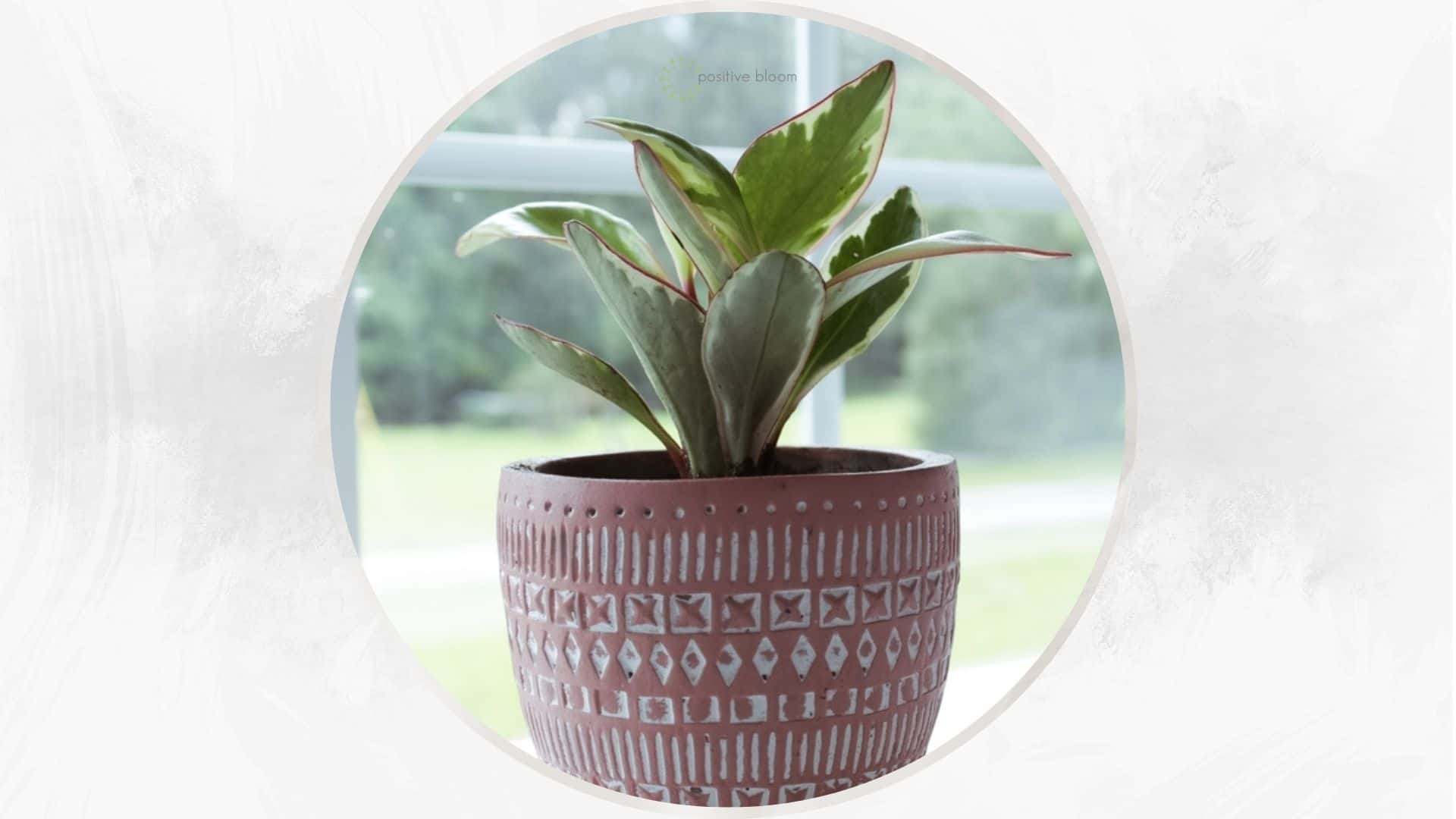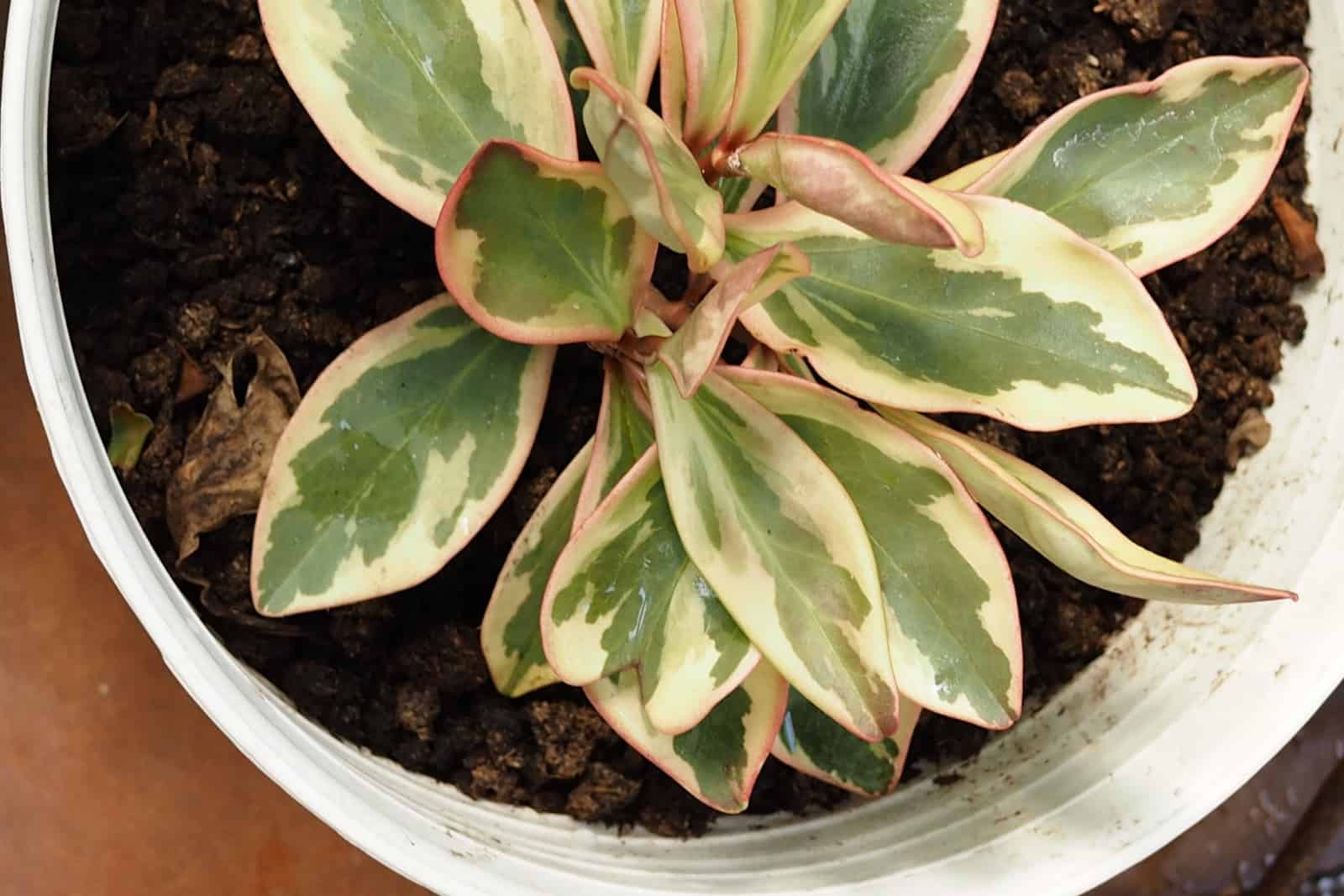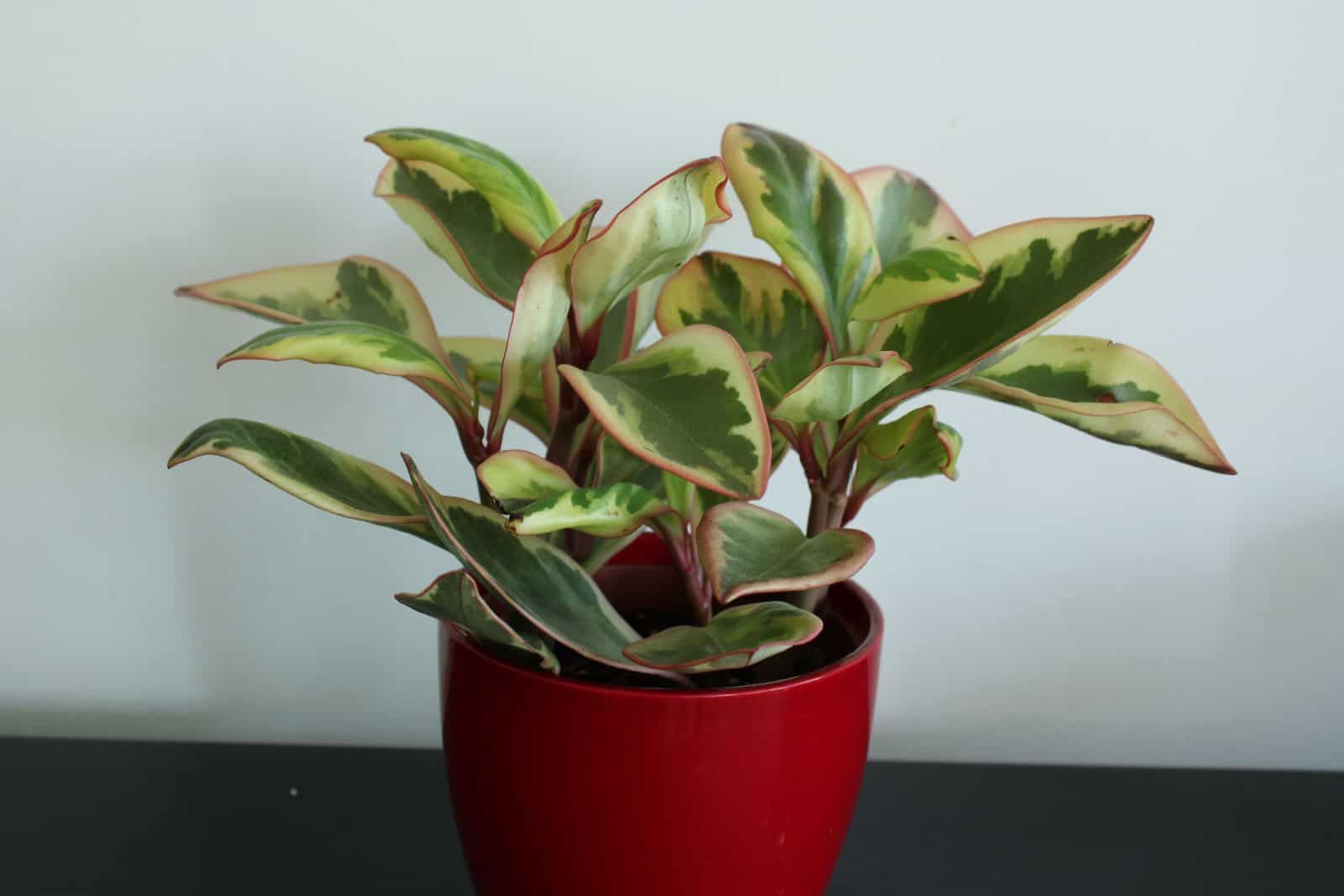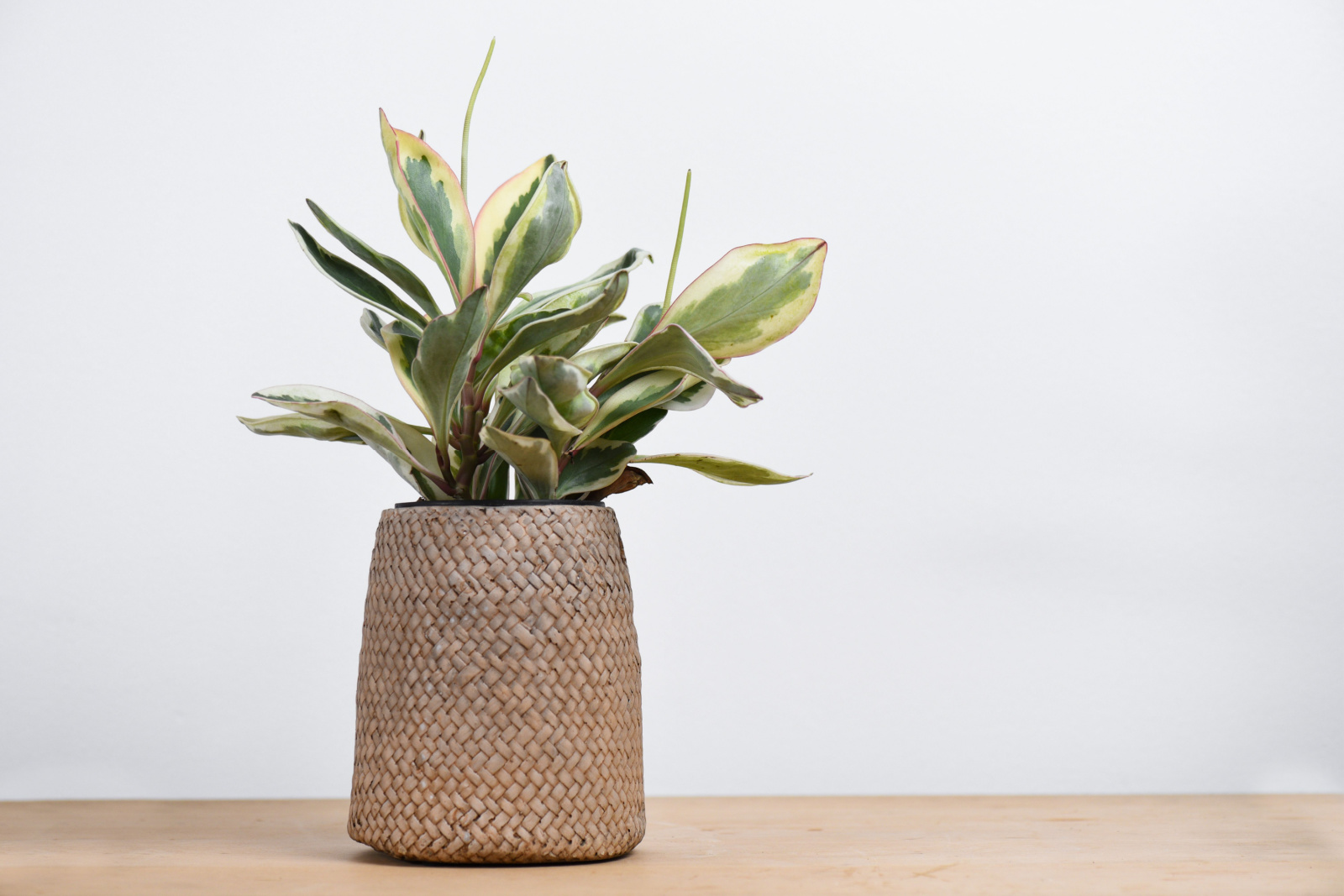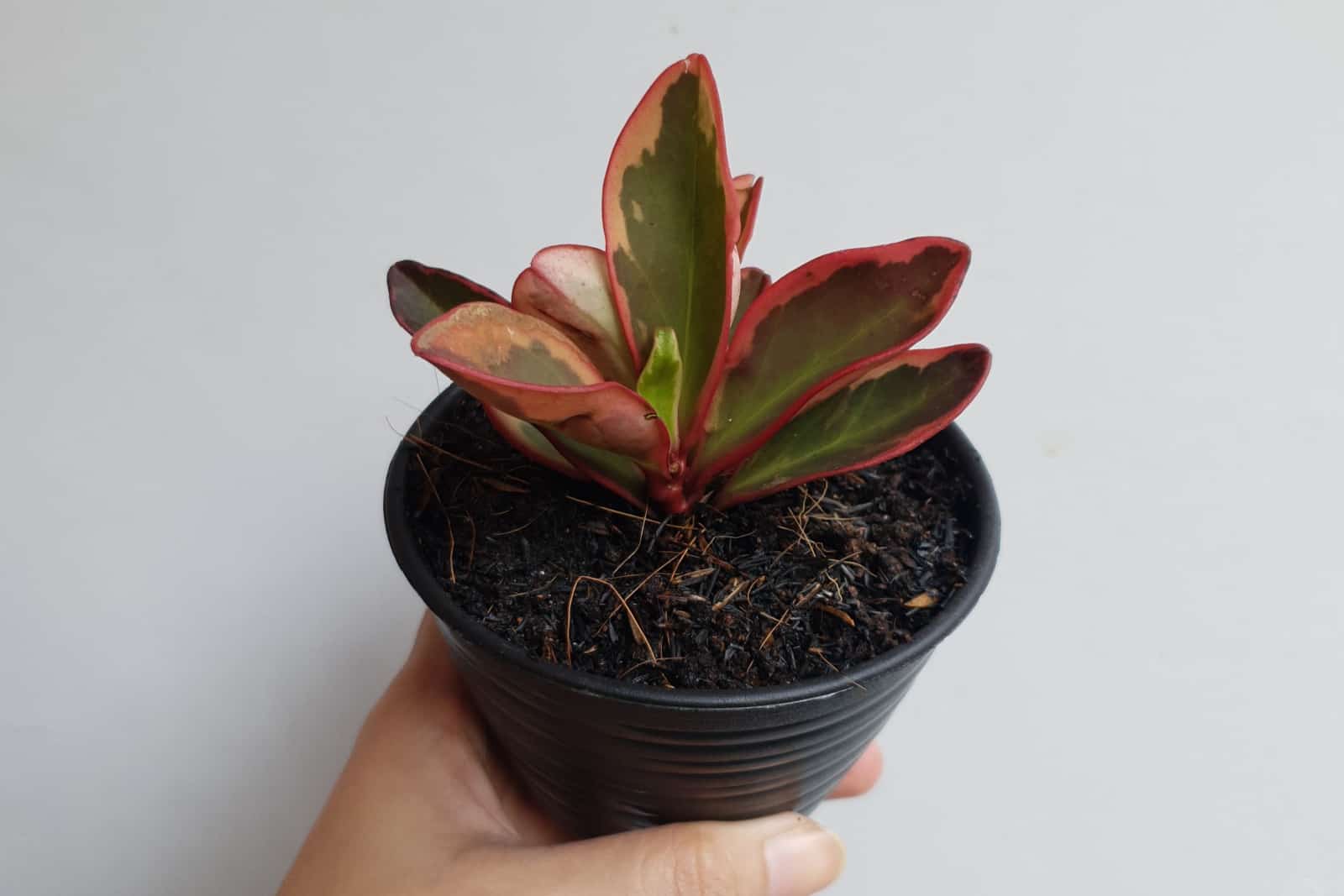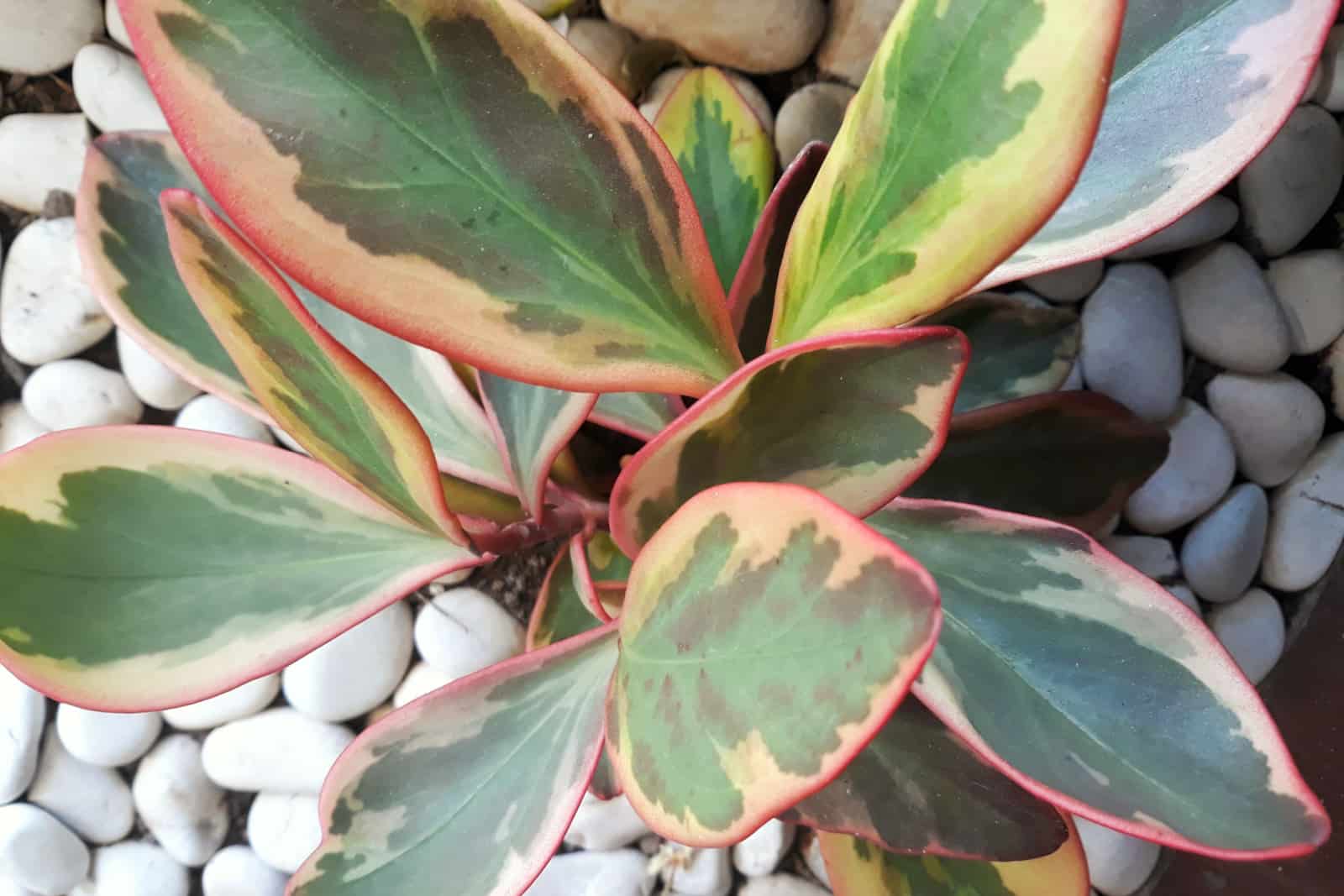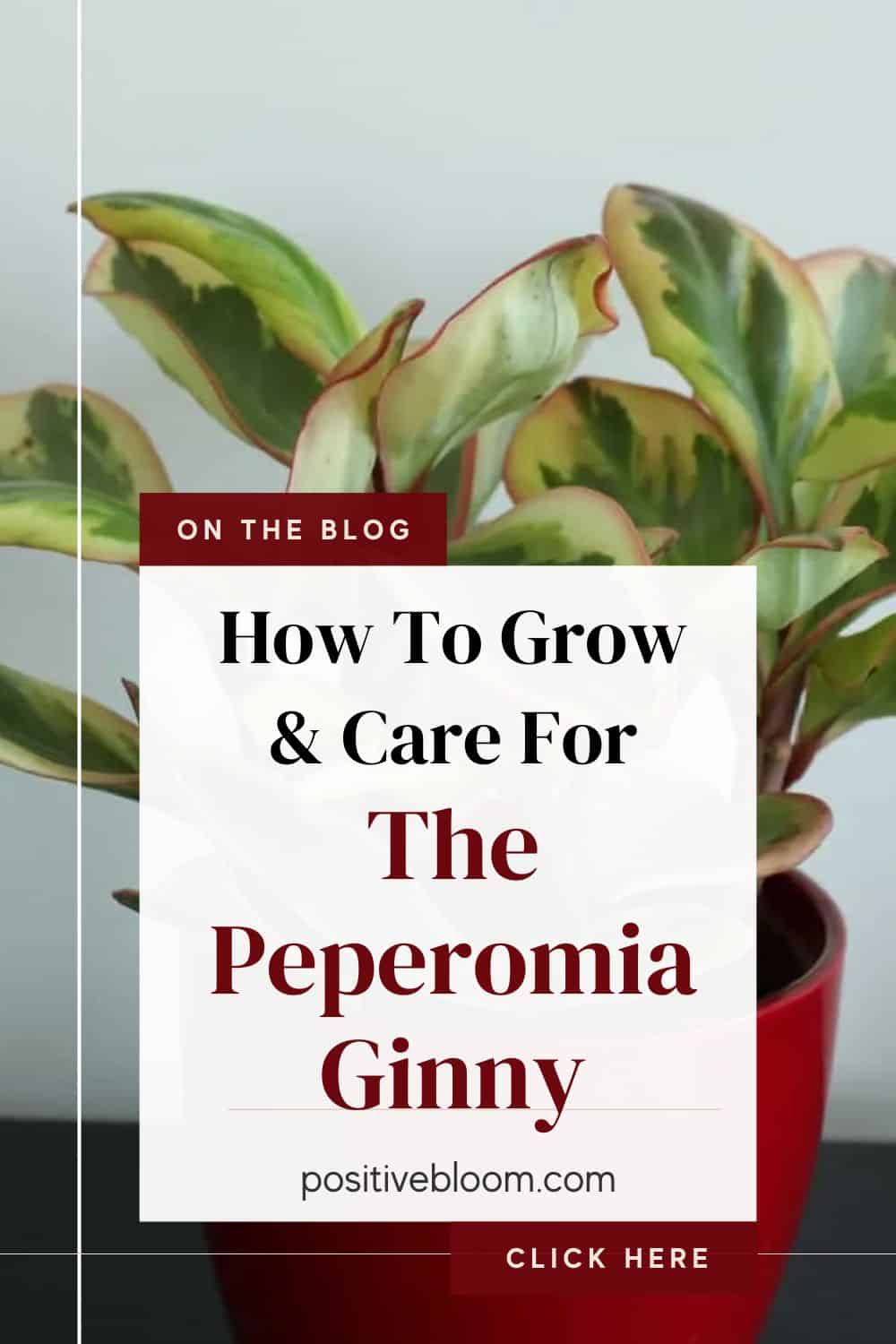If you had a chance to peek at houseplant collections of experienced growers, you would see that many have plants such as Monsteras, Philodendrons, Anthuriums, and Peperomias.
All these plants are low-maintenance, which is the main reason they became so popular. Each of these plants has its cultivars and sports.
In this article, I’ll tell you about the sport of one Peperomia species, Peperomia Ginny. This lovely plant is a sport variety of the well-known Peperomia clusiifolia.
The Peperomia Ginny has many excellent features, and I’ll tell you more about its care requirements and why it should be part of your plant collection.
Let’s start with some basic info about the Ginny Peperomia:
| Family: | Piperaceae |
| Genus: | Peperomia |
| Scientific name: | Peperomia clusiifolia ‘Ginny’ |
| Common names: | Peperomia Ginny, Tricolor Peperomia, Red Edge Peperomia |
| Plant type: | Perennial, epiphyte |
| Native habitat: | Central and South America |
| USDA hardiness zones: | 10-12 |
Let’s get started!
What Is The Peperomia Ginny?
The most popular Peperomia plant varieties are the Peperomia caperata, String of turtles, Peperomia Scandens Variegata, and Peperomia clusiifolia.
The Peperomia clusiifolia and its sport variety Peperomia Ginny come from the tropical regions of Central and South America.
The Ginny Peperomia is a perennial plant grown mainly for ornamental purposes. The mature size of the plant doesn’t exceed 12 inches, and the plant typically reaches up to 10 inches in width.
The leaves come in three colors, which earned the plant the nickname “Tricolor Peperomia”.
The dark green leaves of the Ginny Peperomia have red margins and creamy-white variegations, hence the nickname, Red Edge Peperomia.
There’s one more fascinating thing about this sport variety; its stalks come in red, which is pretty rare for houseplants in general.
The Ginny Peperomia develops tiny, odorless flowers that grow atop long spikes.
This sport variety is primarily grown for its stunning foliage, as the flowers are pretty unattractive.
Due to its fleshy foliage, the Ginny Peperomia is often described as a semi-succulent plant. Even though the plant has some succulent features, it’s not a true succulent plant.
One of the best features of Peperomia plants is that they aren’t toxic, so you can place them anywhere in your home.
Peperomia Clusiifolia Ginny Plant Care Guide
The Peperomia Ginny has fairly simple care requirements, making it a desirable indoor plant even for novice gardeners.
Here’s a table with an overview of the care requirements of the Peperomia Ginny:
| Light: | Bright indirect light |
| Humidity: | Moderate |
| Temperature: | 60°F to 80°F |
| Soil: | Porous, well-draining, slightly acidic |
| Watering: | Moderate |
| Fertilizing: | Liquid fertilizer during the growing season |
| Pruning: | Occasional |
| Repotting: | 2-4 years |
Let’s get into details!
Light Requirements
Peperomias are excellent plants for east-facing windows. What does this actually mean?
Well, windows with eastern exposure don’t receive direct sunlight, so the delicate leaves of tropical plants won’t receive intense sun rays and suffer from sunburn.
The full sun won’t damage your Peperomia Ginny in the early mornings, and the eastern exposure will provide more sun in the morning and indirect light during the afternoon.
Western exposure will also work great as it receives bright indirect light.
If placing your Peperomia Ginny near a south-facing window, cover the windows with sheer curtains to filter the light or move the plant a few feet away.
Artificial lights will come in handy if you only have north-facing windows.
Humidity Requirements
Tropical plants are known for their high humidity requirements, but the Peperomia Ginny isn’t a typical tropical plant.
It actually grows well in humidity levels ranging from 30% to 80%. Since the average humidity in homes is about 30%, don’t bother to increase it because your Peperomia Ginny will grow just fine.
I highly recommend misting your Red Edge Peperomia if you live in an arid climate. Misting won’t take much time and will help your Peperomia grow healthy and be happy for a long time.
What Is The Best Temperature For The Peperomia Ginny?
The tropical features of the Ginny Peperomia are best reflected in its temperature requirements. A temperature range of 60-80 degrees Fahrenheit will work best. Still, if temperatures go up to 95 degrees Fahrenheit, there’s no need to worry.
Bear in mind that high temperatures enhance the water evaporation rate, so the water requirements of the Peperomia Ginny will increase. Keep reading to find out more about watering the Peperomia Ginny plant.
The tricolor Peperomia is far from cold-hardy, and anything lower than 50 degrees Fahrenheit will significantly impact its growth.
The Best Soil Type
Another excellent feature of this Peperomia plant is its low requirements regarding soil type.
The Peperomia Ginny will thrive in a potting mix made of fertile, porous, and well-draining ingredients.
For example, a blend of standard potting soil, peat moss, and perlite or orchid bark will fulfill the requirements of your Peperomia when it comes to soil.
This popular houseplant is very sensitive to root rot. Still, if you provide it with well-draining soil, you won’t need to worry about the disease.
Watering Schedule
I often refer to Peperomia plants as easy-to-water plants. It’s only hard until you figure out when and how to water your plants.
Here are some tips and tricks to help you create a perfect watering schedule for your Peperomia Ginny.
The first thing to figure out is how often to water your Peperomia. Well, this one is actually pretty simple. You should let the upper 25% of the soil dry out and then water your Tricolor Peperomia plant until you see water running out through the drainage holes.
You can determine soil dryness by sticking your finger in the soil. If the topsoil is dry, proceed with watering your Peperomia.
Warm temperatures during the summer months will increase the watering needs of the Peperomia Ginny, so consider sticking your finger in the soil more frequently.
Winter is the dormancy period, at which point the Peperomia plant’s watering needs will be significantly lower.
Never water the beautiful Tricolor leaves, as they could soften and rot if you leave them wet. That’s pretty much it; if you stick to these ‘rules,’ your Peperomia will have enough water to thrive and its roots won’t be sitting in water.
Overwatering vs Underwatering
Overwatering is the result of an incorrect watering schedule; if you water too often or soil drainage isn’t adequate, water will quickly accumulate in the soil and suffocate the roots.
The leaves will turn yellow, the soil will become mushy, a foul odor will appear, and the plant will eventually start wilting.
On the other hand, if yellowing comes along with wilting, dry soil that crumbles at the touch, and the plant looks dehydrated, you are dealing with underwatering.
Fertilizing Schedule
The Peperomia Ginny isn’t a heavy feeder. Peperomias, aka radiator plants, are slow-growing and food isn’t an obligatory part of their care.
If using fertilizer, don’t feed your Peperomia Ginny plant too often. Monthly feeding with liquid fertilizer during the growing season will work just fine.
Pruning
Generally speaking, the Peperomia Ginny doesn’t need much pruning if it’s healthy. It’s a compact and slow-growing plant.
If your Peperomia has discolored, damaged, or diseased leaves, you’ll need to cut them off. Remember that diseases spread quickly, so when pruning, make sure you clean your cutting tools.
Of course, you can prune your Peperomia Ginny plant if you have a specific shape in mind.
Repotting
As mentioned a few times above, the Tricolor Peperomia has a slow growth rate. Consequently, its needs for repotting are pretty low.
Don’t worry if your Peperomia is slightly rootbound. I repot my Tricolor Peperomia every two years. I could wait longer, but I just like that feeling and want to ensure new nutrients for my precious plants.
The roots of your Peperomia Ginny will start coming out of the drainage holes, which is a tell-tale sign you need to buy it a slightly larger pot.
Bear in mind that repotting is obligatory in specific cases, like if your Red Edge Peperomia suffers from root rot or other diseases.
When repotting, make sure you use a new potting mix and a slightly larger pot.
Peperomia Ginny Plant Propagation
New plants make us all happier, and a new Peperomia will certainly be a big reason for happiness!
Peperomia Ginny Propagation can be done in a few ways, including stem cuttings, leaf cutting, and root division.
I prefer the stem cutting plant propagation method, and I highly recommend it to beginner growers.
If you have ever propagated a Watermelon Peperomia or other Peperomia plants, this will be a piece of cake.
Let’s see how to do it!
Stem Cuttings
Let’s first discuss what to prepare if you decide to propagate your Ginny Peperomia. Prepare sharp and clean scissors, pruners, or a knife, and a sterilizing solution for cutting. You also need a rooting medium, such as water (for water propagation) or soil, and you can use a rooting hormone if you wish.
Here are the steps for Peperomia Ginny propagation using stem cuttings:
1. Choose a healthy Peperomia stem with a few leaves and cut it below the leaf node.
2. Remove the lower leaf on the cutting and dip the cut end in a rooting hormone (or brush it if using a powder version).
3. Put the Peperomia stem cutting in a glass filled with water, or bury the cut end in the soil.
4. Water the cutting well and put the pot or glass in bright indirect light.
5. Once you notice new growth, plant the rooted stem cutting in the soil if using water as a rooting medium. If you used soil, transplant the cutting to a permanent pot.
Leaf Cuttings
Here are the steps for the leaf cutting propagation method:
1. Sanitize your cutting tool and make an incision just below the petiole’s stem-attachment point.
2. Let the cut Peperomia leaf callous over for a day.
3. Dip the cut end of the leaf cutting in a rooting hormone.
4. Plant the leaf cutting in your growing medium and make sure it remains upright. Hydrate it well but not so much that it becomes damp.
5. Put the nursery pot in bright indirect light and pay attention to the temperature; the cutting will perform best in temperatures around 70 degrees Fahrenheit.
Peperomia Tricolor Common Issues
Peperomias are generally referred to as problem-free plants. If you meet the requirements of your Peperomia Ginny, problems will be very rare.
However, there are a few things to look out for when growing this Peperomia plant, and we’ll discuss them now.
Pests & Diseases
Mealybugs, scale, spider mites, aphids, and fungus gnats are big fans of indoor plants. The Peperomia Ginny isn’t susceptible to pests, but if they do appear, rub the colorful leaves with neem oil or an insecticidal soap solution.
Root rot disease is the most common in Peperomia Ginny plants, and it typically occurs as a consequence of overly wet soil and root suffocation.
I always recommend repotting in the case of root rot, as the fungus that causes the disease quickly spreads and can kill the plant.
Discoloration And Deformation
Here’s a list of the most common problems with the Peperomia Ginny regarding appearance:
1. Yellowing: This is one of the most common problems with houseplants, and the main reason is that there are so many causes for it. If it’s accompanied with wilting and drooping, your Ginny Peperomia is lacking water.
If mushy soil and a foul odor occur, the reason for yellowing is overwatering.
2. Wilting and curling: The most common causes of wilting and curling of the Peperomia Ginny are lack of water (underwatering) and high temperatures.
3. Leaves turning brown: The culprit in this case is most frequently direct sunlight.
If you notice any of the above mentioned issues, check the conditions. In cases of severe deformation and discoloration, take your Peperomia Ginny out of its pot and check the root system.
Wrapping Up
As you can see, there are many reasons to add the Peperomia Ginny to your plant collection. It isn’t toxic, has low-care requirements, and looks breathtaking.
The Peperomia clusiifolia Ginny will make an excellent addition to your household.
Ensure the correct conditions, inspect it regularly, and don’t forget to propagate to get more Tricolor Peperomias!
Until next time!
Like this post? Share or pin it for later!

